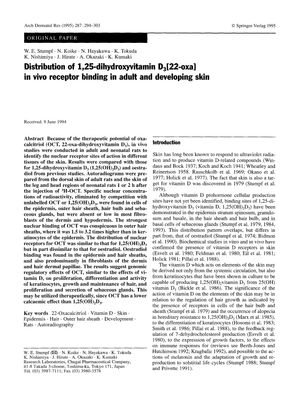Distribution of 1,25-Dihydroxyvitamin D3[22-Oxa] In Vivo Receptor Binding in Adult and Developing Skin
January 1995
in “
Archives of dermatological research
”

TLDR OCT binds strongly to hair sheath cells and may affect skin and hair growth with fewer side effects than vitamin D3.
In the 1995 study, researchers examined the binding sites of oxa-calcitriol (OCT) in the skin of adult and neonatal rats to explore its potential effects on skin and hair follicle function. They found that OCT had the strongest binding in the outer hair sheaths, with 1.5 to 3.2 times higher binding than in epidermal keratinocytes. The distribution of OCT receptors was similar to that of 1,25-dihydroxyvitamin D3 but differed from estradiol. The study suggests that OCT may influence keratinocyte proliferation, differentiation, hair growth, and sebaceous gland activity, and could have therapeutic applications due to its lower calcaemic effect compared to 1,25-dihydroxyvitamin D3.





